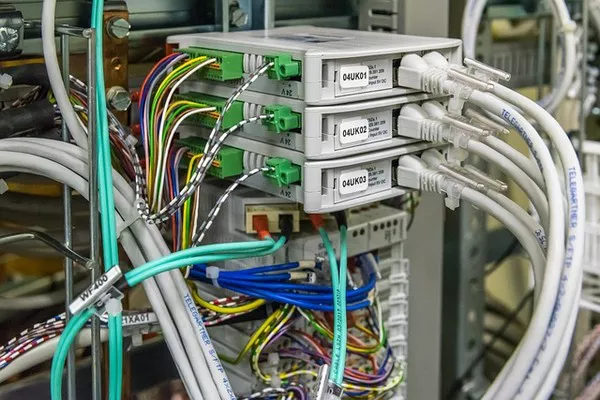Electrical equipment plays a vital role in our modern world, powering various industries and appliances. To ensure safety and efficiency, these devices are categorized into different classes based on their design and construction. In this article, we will delve into Class 1 electrical equipment, exploring its characteristics, applications, and the significance of adhering to safety standards to safeguard both users and the environment.
Class 1 Electrical Equipment: An Overview
Class 1 electrical equipment refers to devices that have a single layer of insulation between live components and the user or operator. This class is defined under the international standard IEC 61140, which sets the guidelines for electrical safety in various applications. The primary objective of Class 1 equipment is to prevent electric shock and ensure that any fault or failure in the insulation is unlikely to result in a dangerous situation.
Characteristics of Class 1 Electrical Equipment
1. Earth Connection
One of the distinguishing features of Class 1 electrical equipment is the provision for an earth connection. This connection, typically achieved through a three-pin plug with an earth prong, allows for the safe discharge of fault currents to the ground, preventing electric shocks in the event of insulation failure.
2. Metal Enclosures
Class 1 equipment often incorporates metal enclosures, providing an additional layer of protection to users. In case of a fault, the metal enclosure can conduct the fault current away from the user, further reducing the risk of electric shock.
3. Double Insulation
While Class 1 equipment has a single layer of insulation between live parts and the user, some devices also feature an additional layer of insulation known as double insulation. This supplementary layer acts as a backup to the primary insulation, offering an extra level of safety.
Applications of Class 1 Electrical Equipment
1. Household Appliances
Class 1 electrical equipment finds widespread use in household appliances such as refrigerators, washing machines, ovens, and vacuum cleaners. The earth connection and metal enclosures in these devices enhance user safety during everyday use.
2. Industrial Machinery
In industrial settings, Class 1 equipment is employed in various machinery and equipment, including motor-driven tools, pumps, and industrial refrigerators. The safety measures incorporated in Class 1 devices are crucial in high-risk environments to protect workers from potential electrical hazards.
3. Power Tools
Many power tools, such as drills, saws, and grinders, fall under Class 1 electrical equipment. The sturdy metal enclosures and earth connections in these tools safeguard operators when working with high-powered electrical devices.
4. Lighting Fixtures
Certain lighting fixtures, especially those intended for outdoor use or in damp locations, are classified as Class 1 electrical equipment. The earth connection in these fixtures prevents water-induced faults and ensures user safety.
Safety Precautions and Compliance
1. Routine Inspections and Maintenance
Regular inspections and maintenance are essential to ensure the continued safety and performance of Class 1 electrical equipment. Users and operators should visually inspect the devices for any visible damage, frayed cables, or loose connections. Additionally, periodic electrical tests may be necessary to identify any hidden faults that could compromise safety.
2. Proper Grounding
Proper grounding of Class 1 equipment is crucial for effective fault current diversion. Users should always connect the equipment to a properly grounded electrical outlet to enable the safe discharge of fault currents.
3. Authorized Service and Repairs
In case of equipment malfunction or damage, repairs should only be conducted by authorized service personnel or certified technicians. Unauthorized repairs may void warranties and compromise the safety features of the equipment.
4. Adherence to Safety Standards
Manufacturers of Class 1 electrical equipment must comply with international safety standards, such as IEC 61140, to ensure that their products meet the required safety criteria. Additionally, users should verify that the devices they purchase bear relevant safety certifications and comply with national or regional regulations.
Advantages and Limitations of Class 1 Electrical Equipment
1. Advantages
Enhanced Safety: The primary advantage of Class 1 electrical equipment is the high level of user safety provided by the earth connection and metal enclosures, reducing the risk of electric shock and potential accidents.
Durability: Class 1 devices often feature robust construction, making them suitable for heavy-duty applications and environments with challenging conditions.
Wide Applicability: Class 1 equipment is suitable for a broad range of applications, from household appliances to industrial machinery, making them versatile and widely used.
2. Limitations
Size and Weight: The inclusion of metal enclosures and other safety features can increase the size and weight of Class 1 equipment compared to devices with lesser safety requirements.
Installation Complexity: Proper installation of Class 1 electrical equipment may require specific considerations, such as appropriate grounding and compliance with safety standards.
Conclusion
Class 1 electrical equipment plays a crucial role in ensuring the safety of users and operators across various applications. With features like earth connections, metal enclosures, and sometimes double insulation, these devices significantly reduce the risk of electric shock and potential accidents. Proper maintenance, grounding, and adherence to safety standards are essential to maximize the benefits of Class 1 equipment. As technology advances and safety standards evolve, Class 1 electrical equipment continues to be an indispensable component of our daily lives, ensuring a secure and efficient electrical experience for all.

